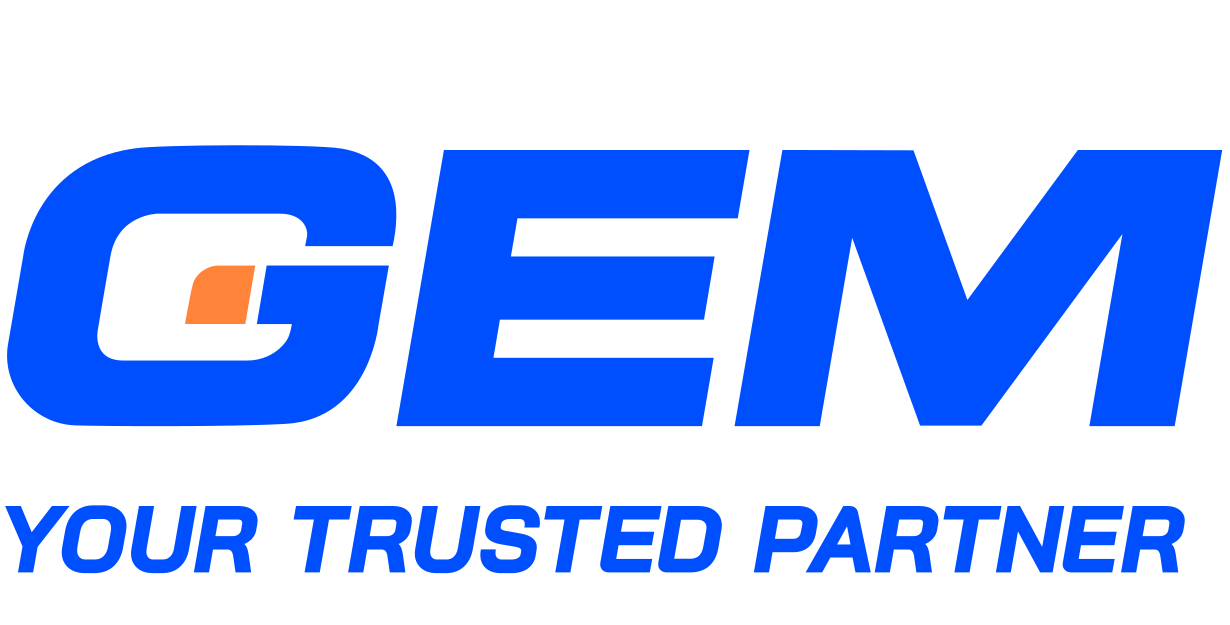Contents
The digital landscape is transforming with the rise of Web3, promising a shift in data interaction focused on decentralization and user ownership, fostering a more transparent and secure online ecosystem. In this article, we’ll explore how Web3 development enhances data security, addressing Web 2.0’s shortcomings and ushering in a new era of user control and privacy.

Web3 development and potential benefits for data security
Blockchain is a decentralized digital ledger that securely records transactions across multiple computers. Each block contains transaction data, linked chronologically, and validated by multiple nodes, ensuring transparency and security without a central authority.
This decentralized nature of blockchain is key to Web3 development, addressing the security concerns of Web 2.0. In Web 2.0, large tech companies control vast amounts of personal data, leading to privacy issues and potential misuse. Web3, however, uses blockchain to distribute data across nodes, giving users control over their data and enhancing security and transparency.
By distributing data across a blockchain network, Web3 reduces the risk of data breaches and unauthorized access, providing a more secure and transparent online ecosystem. This represents a significant advancement in data security and privacy.

Enhanced data ownership
One of the fundamental changes Web3 development brings is the concept of true data ownership. With blockchain, users can maintain ownership of their data, which is stored in a decentralized manner. This means no single entity can control or manipulate the data, and users can manage access permissions, ensuring their data is used only as they intend.
Central to this enhanced data ownership are Decentralized Identifiers (DIDs) and Verifiable Credentials (VCs).
- DIDs are a new type of identifier that enables verifiable, self-sovereign digital identities. Unlike traditional identifiers such as email addresses, DIDs are created, owned, and controlled by the user. They are not dependent on any central authority, enabling users to manage their digital identities independently.
- Verifiable Credentials (VCs) are digital statements that can be cryptographically verified. They allow users to present proof of their qualifications, memberships, or other claims in a secure and privacy-preserving manner. VCs ensure that users can control who sees their credentials and under what circumstances, further enhancing their ownership and control over personal data.
Improved security and transparency
Blockchain’s decentralized nature eliminates single points of failure, making Web3 development more resilient against cyberattacks. Data stored on a blockchain is immutable, meaning it cannot be altered once recorded. This ensures the integrity and transparency of data, as all transactions are publicly verifiable. Users can trust that their data remains secure and unaltered.
Key to this improved security and transparency are consensus mechanisms like Proof of Work (PoW) and Proof of Stake (PoS).
- Proof of Work (PoW) requires participants (miners) to solve complex mathematical puzzles to validate transactions and add them to the blockchain. This process is computationally intensive, making it difficult and costly for any single entity to alter the blockchain, thus ensuring data integrity and security.
- Proof of Stake (PoS), on the other hand, allows participants (validators) to validate transactions based on the number of tokens they hold and are willing to “stake” as collateral. This method is energy-efficient and incentivizes honest behavior, as validators risk losing their staked tokens if they act maliciously. PoS enhances transparency and trust by aligning the interests of validators with the network’s overall security.

Smart contracts and automated processes
Web3 development utilizes smart contracts to automate processes and enforce rules without human intervention. These self-executing contracts run on blockchain technology, reducing the risk of human error and increasing efficiency.
Smart contracts are programs stored on a blockchain that automatically execute predefined actions when certain conditions are met. They operate based on “if-then” logic, meaning that if a specified condition is fulfilled, the contract performs the agreed-upon action. This ensures transparency and trust, as the contract’s terms are immutable and publicly verifiable.
This process eliminates the need for intermediaries, reduces transaction costs, and ensures that the terms of the agreement are strictly adhered to, providing an extra layer of security and trust.
Enhanced user control over data
Web3 development gives users control over how and when their data is shared. Users can decide which third parties have access to their data and for how long. They can also revoke access at any time, ensuring that their data is not misused. This level of control was not possible in the Web 2.0 environment, where data once shared often remained accessible to the service provider indefinitely.
Central to this enhanced control in web3 development is the Self-Sovereign Identity (SSI) protocol. SSI allows individuals to own and manage their digital identities without relying on a central authority. Users create and control their own identifiers (Decentralized Identifiers or DIDs) and store their identity credentials securely on their devices. These credentials can be shared selectively and verified cryptographically, ensuring authenticity without exposing unnecessary personal information.
Incentivized privacy and security
In Web3 development, blockchain networks can use incentives to ensure data privacy and security. Participants in the network are rewarded for maintaining the integrity of the system, and penalties are imposed for violations. This decentralized governance model ensures that all participants follow the rules, enhancing overall security.

One prominent method employed in blockchain networks to enforce these rules is the staking and slashing mechanism. Staking involves participants locking up a certain amount of cryptocurrency as collateral. In return, they gain the right to participate in the network’s consensus process, such as validating transactions and creating new blocks. Participants are incentivized with rewards, typically in the form of newly minted tokens or transaction fees.
However, to ensure that participants act honestly and follow the network’s rules in web3 development, a slashing mechanism is implemented. Slashing penalizes participants for malicious behavior or violations of protocol rules by forfeiting a portion of their staked assets. This dual mechanism of reward and penalty ensures a high level of security and integrity within the network.
Examples of staking and stashing models
- Polkadot: Polkadot’s consensus mechanism, Nominated Proof-of-Stake (NPoS), involves nominators who back validators by staking their DOT tokens. Validators are rewarded for maintaining the network’s security, but if they act maliciously, their staked assets can be slashed.
- Ethereum 2.0: Ethereum’s transition to Proof-of-Stake (PoS) in Ethereum 2.0 involves validators staking ETH to propose and validate new blocks. Validators earn rewards for their participation, but can also be penalized for misconduct, such as proposing conflicting blocks or being offline during their assigned time slots.
Challenges and considerations of implementing Web3 development in data security
While Web3 offers a revolutionary approach to data security and user control, its path to widespread adoption is not without hurdles.
Equipping users for the Web3 future
The decentralized nature of Web3 development necessitates a shift in user behavior. Unlike Web 2.0, where centralized platforms handle user authentication and data management, Web3 requires users to take a more active role.

What users need to learn about
First, understanding digital wallets and private key management. Users need to grasp the importance of securely storing their private keys, which grant access to their data and crypto assets. Losing a private key can result in permanent data loss.
Digital wallets come in two main types: software wallets and hardware wallets.
- Software wallets: These are applications installed on your computer or mobile device. They offer convenience and accessibility but require robust security measures to protect against online threats.
- Hardware wallets: These are physical devices that store private keys offline, providing enhanced security against hacking. They are ideal for long-term storage of significant assets.
Private key management solutions are crucial for securing digital assets in web3 development. Some effective methods include:
- Multisig (Multi-signature): Requires multiple private keys to authorize a transaction, adding an extra layer of security. This prevents a single point of failure.
- Third-party key management services: Services like custodial wallets or key management platforms (e.g., BitGo, Coinbase Custody) securely store private keys on behalf of users, offering peace of mind and professional security measures.
Second, Navigating SSI and decentralized applications (dApps). Interacting with dApps often requires familiarity with unfamiliar interfaces and functionalities. Educating users on how to navigate these new tools and understand the potential risks associated with them is crucial.
The transition to Web3 development represents a significant learning curve. Providing ongoing training and education will be essential to ensure users can fully adopt and adapt to this new paradigm.
Strategies to enable a seamless transition
To facilitate the transition to Web3 development and ensure widespread adoption, several strategies can be implemented such as:
- Developing user-friendly interfaces: Simplifying digital wallet management and interactions with decentralized applications (dApps) is crucial for attracting non-technical users. By creating more intuitive and accessible interfaces, users can more easily navigate the complexities of Web3, making it more approachable for everyone.
- Investing in educational resources: Providing comprehensive tutorials, video guides, and educational campaigns can significantly empower users to understand and navigate the Web3 landscape. These resources can help demystify the technology and equip users with the knowledge they need to engage confidently with decentralized platforms.
- Building a strong developer community: Encouraging developers to prioritize user experience and create intuitive interfaces is key to fostering user adoption. By fostering a community of developers focused on enhancing usability, the Web3 development ecosystem can become more user-centric, promoting a smoother transition for new users.
The legal frameworks surrounding Web3 development are still evolving, creating significant uncertainty for businesses and developers. Key questions remain unanswered, particularly in areas such as data ownership, privacy, security, and compliance.

Data ownership and privacy
One of the primary concerns is how existing data privacy regulations like GDPR and CCPA will translate to the decentralized environment of Web3 development. Traditional frameworks are designed around centralized entities that control and process data, but in a decentralized system, responsibility becomes more diffuse. This raises critical questions about who is ultimately responsible for data breaches and how data ownership is managed.
Security and compliance
Another challenge is ensuring compliance with evolving regulations while leveraging the benefits of Web3 technologies. Businesses need to understand how to navigate the new legal landscape to avoid potential penalties and ensure they are not compromising security in the process.
The impact of this regulatory ambiguity can be significant. Without clear guidelines, businesses may be hesitant to invest in Web3 development projects, stifling innovation and hindering mainstream adoption.
Scalability and performance
Current decentralized storage solutions like IPFS face scalability challenges. While they offer a high degree of security and decentralization, they may not be able to handle the massive data volumes generated by today’s web applications. This can lead to slow transaction times and high storage costs, which make Web3 solutions competitive compared to centralized alternatives.
- Slow transaction processing times: Users may experience delays when interacting with dApps due to limitations in the underlying infrastructure.
- High storage costs: Storing large datasets on decentralized networks can be expensive, potentially hindering the adoption of Web3 development for certain applications.

To tackle these issues, several potential solutions are being explored.
Research and development in Layer 2 scaling solutions
Layer 2 protocols aim to process transactions off-chain before settling them on the main blockchain. This approach significantly improves scalability and reduces transaction costs by minimizing the load on the primary blockchain. By leveraging Layer 2 solutions, such as rollups and state channels, Web3 development can handle transactions more efficiently and cost-effectively.
Rollups bundle multiple transactions into a single batch and then submit this batch to the main blockchain, reducing the number of transactions that need to be processed on-chain. There are two main types of rollups: Optimistic Rollups and Zero-Knowledge Rollups (ZK-Rollups).
- Optimistic Rollups: Assume transactions are valid by default and only run computations if there is a challenge to a transaction’s validity. This makes them faster and more efficient. An example of a project using Optimistic Rollups is Optimism, which aims to increase Ethereum’s throughput and reduce gas fees.
- ZK-Rollups: Use zero-knowledge proofs to verify the correctness of transactions off-chain and submit a succinct proof to the blockchain. This ensures high security and faster finality. zkSync is a prominent project utilizing ZK-Rollups to enhance Ethereum’s scalability.
State Channels allow two parties to conduct transactions off-chain, updating the state of their interactions privately before closing the channel and submitting the final state to the main blockchain. This reduces on-chain transactions and significantly lowers costs.
An example of state channels in action is the Lightning Network for Bitcoin, which enables fast and low-cost transactions.
Exploring alternative storage solutions
Decentralized storage solutions are critical for long-term scalability. Research into more efficient and cost-effective storage options, such as decentralized file systems and peer-to-peer networks, can provide the necessary infrastructure for storing large volumes of data without compromising security or accessibility. Innovations in this space are crucial for supporting the growing data demands of Web3 applications.
Optimizing dApp development practices
Developers play a key role in ensuring the scalability of Web3 applications. By considering data storage requirements and network limitations during the design and development stages, developers can create more efficient and scalable dApps. This includes implementing best practices for data management, optimizing code for performance, and leveraging scalable infrastructure solutions.

Closing remark
Web3 development presents a compelling vision for the future of data security by empowering users with ownership and control over their data, fostering transparency, and leveraging the immutability of blockchain. However, the path to widespread adoption is not without its challenges. Equipping users with the skills and knowledge to navigate this new paradigm, navigating an evolving regulatory landscape, and overcoming scalability limitations are all areas that require continued development and innovation.
The Web3 future starts with you
Your company, however, is positioned to play a pivotal role in this journey. With our expertise in IT outsourcing and a deep understanding of Web3 development and technologies, GEM can help businesses and individuals navigate the new landscape.



